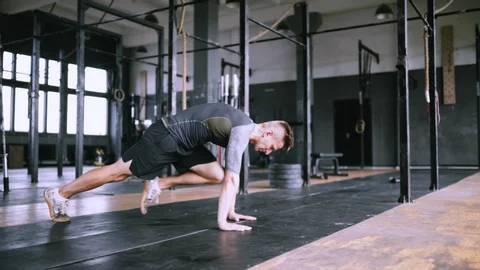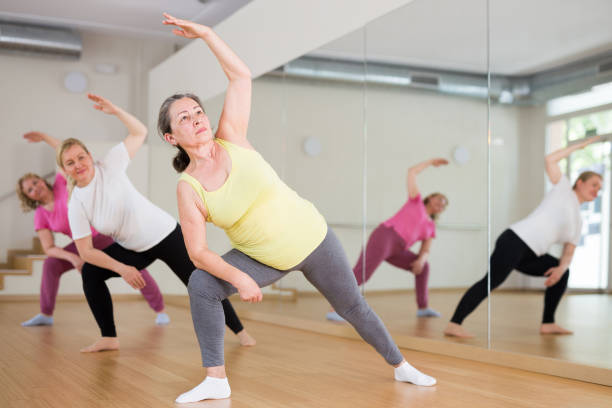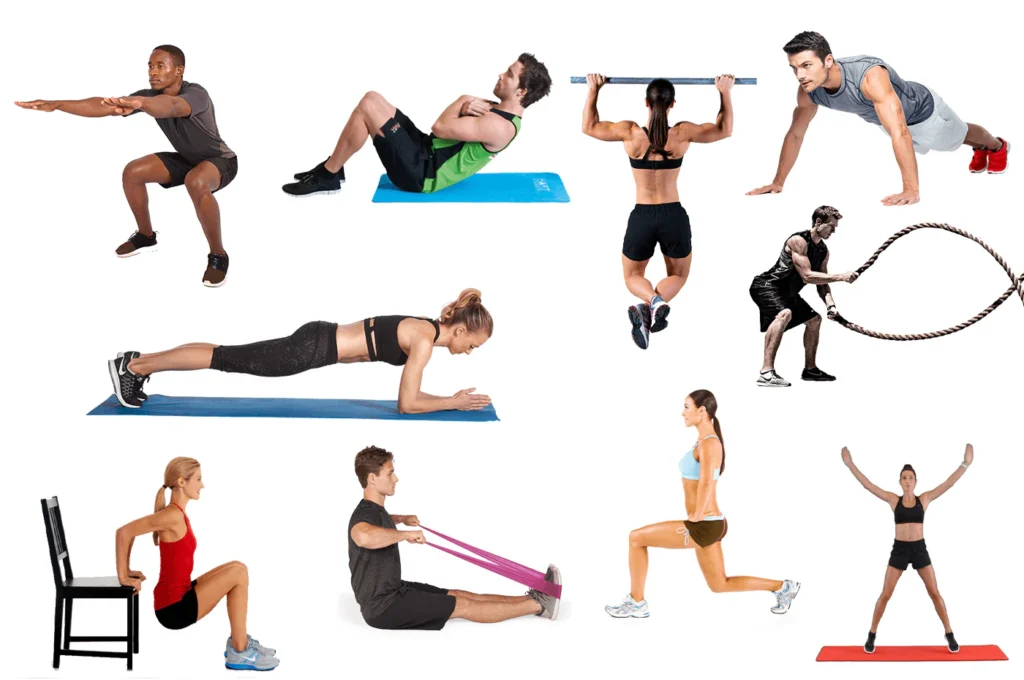Leveling exercises, also called balance exercises, improve stability, core strength, and posture. They are essential for injury prevention and enhancing overall fitness performance.
This guide dives into the world of leveling exercises, covering everything you need to know.
What Are Leveling Exercises?

Leveling exercises, also known as balance exercises or stabilization exercises, involve movements that challenge your ability to maintain stability and proper alignment. These exercises engage your core and stabilizing muscles to keep your body balanced during activity, improving strength, coordination, and posture.
Key Muscles Targeted by Leveling Exercises:
- Core Muscles (Abdominals, Obliques, Lower Back)
- Gluteal Muscles
- Hip Flexors and Extensors
- Quadriceps and Hamstrings
- Calves and Ankles
Why Are Leveling Exercises Important?
Boosting Core Strength and Stability:
Core strength is essential for almost every physical movement you perform, from walking to lifting. Leveling exercises help build a strong foundation by activating and strengthening the muscles in your core.
Preventing Injury:
Balance and stability are critical for preventing injuries, especially in high-impact sports or daily activities. Weak stabilizing muscles can lead to improper movement patterns and increase the risk of falls, strains, or sprains.
Also read: How Does Pilot Fit in StarCraft Marine – Role of Pilots in StarCraft!
Enhancing Athletic Performance:
Whether you’re an athlete or fitness enthusiast, improving balance and stability will enhance performance. Quick changes in direction, sudden stops, and jumps all require core control and strong stabilizers.
Improving Posture and Body Alignment:
Leveling exercises promote better posture by training your body to maintain alignment. Strong stabilizing muscles reduce pressure on your joints and improve your overall posture during everyday tasks.
Types of Leveling Exercises:
Core Stabilization Exercises:
Core stabilization exercises focus on strengthening the core muscles, including the abdominals, obliques, and lower back. A strong core is the foundation for balance and body control.
- Planks (front and side)
- Bird-Dogs
- Mountain Climbers
- Russian Twists
Balance and Coordination Exercises:

These exercises challenge your balance and coordination, helping your body learn how to stabilize itself during movement.
- Single-Leg Deadlifts
- Standing on a Balance Board
- Bosu Ball Squats
- Tree Pose (from Yoga)
Functional Movement Training:
Functional training mimics everyday movements and challenges your body’s ability to stabilize while performing tasks like squatting, lunging, and rotating.
- Squats and Lunges with Rotation
- Medicine Ball Throws
- Kettlebell Swings
- Farmer’s Walk
Flexibility and Mobility Exercises:
Although not traditionally part of strength training, maintaining flexibility and mobility is crucial for supporting stability. Flexibility exercises ensure your muscles can move through a full range of motion, reducing the risk of injury and enhancing balance.
- Dynamic Stretching
- Yoga Poses
- Pilates
Also read: Will 235/70/15 Tires Fit a 1956 Chevrolet – Fitment Guide: 1956 Chevy
Who Can Benefit from Leveling Exercises?
Athletes:
Athletes can benefit from improved balance, core stability, and body control, all of which contribute to better agility and performance.
Older Adults:
As we age, balance tends to decline, increasing the risk of falls and injury. Leveling exercises help older adults maintain balance, improve muscle strength, and reduce the risk of falls.
Rehabilitation and Physical Therapy Patients:
Individuals recovering from injuries often use balance and stabilization exercises to regain strength and mobility. These exercises help reestablish the mind-muscle connection, which is essential for a full recovery.
Everyday Fitness Enthusiasts:
Incorporating balance exercises into your routine will help you build a stronger core, improve posture, and reduce the risk of injury in your daily life.
How to Incorporate Leveling Exercises into Your Workout Routine?
Begin with Bodyweight Exercises:

For beginners, bodyweight exercises like single-leg balance or planks are great starting points. These exercises help you develop stability without the need for equipment.
Use Stability Props:
If you want to challenge yourself, incorporate tools like a Bosu ball, balance board, or stability ball. These props force your body to engage more stabilizer muscles as you work to maintain balance.
Progress to Dynamic Movements:
As you gain strength and confidence, try adding movement to your balance exercises. For example, perform lunges while standing on a wobble board or do squats on a Bosu ball to increase difficulty.
Incorporate Balance Training as a Warm-Up:
Including leveling exercises in your warm-up routine helps activate your stabilizing muscles and prepare your body for more intense training. For example, perform balance drills or core stabilizing exercises before starting your main workout.
Include Flexibility and Stretching:
Don’t forget to include flexibility work as part of your leveling exercises. Stretching after a workout improves muscle elasticity and ensures your muscles can fully support your body during stabilization exercises.
Sample Leveling Exercise Routine:
Warm-Up:
- 5 minutes of dynamic stretching
- 1-minute single-leg balance (each side)
Workout:
- Plank – 3 sets of 30-60 seconds
- Single-Leg Deadlifts – 3 sets of 10 reps per leg
- Bird-Dog – 3 sets of 12 reps (alternating sides)
- Bosu Ball Squats – 3 sets of 15 reps
- Side Plank with Hip Dips – 3 sets of 10 reps per side
Cool-Down:
- 5 minutes of static stretching
- Yoga poses to relax and stretch your muscles
Common Mistakes to Avoid with Leveling Exercises:
Not Engaging the Core:
The core should remain engaged throughout all leveling exercises. Failing to engage the core can cause improper form and reduce the effectiveness of the exercise.
Progressing Too Quickly:
It’s important to start with simple exercises and gradually increase the difficulty. Jumping into advanced movements too soon can lead to improper technique or injury.
Poor Posture:
Maintaining proper posture is essential when performing leveling exercises. Focus on keeping your spine aligned and avoiding slouching or rounding your shoulders.
FAQ’s
1. What are leveling exercises?
Leveling exercises are movements that improve balance, stability, and posture by engaging core and stabilizing muscles.
2. Why are leveling exercises important?
They strengthen core muscles, enhance body alignment, improve athletic performance, and help prevent injuries.
3. Which muscles do leveling exercises target?
They target core muscles (abdominals, obliques, lower back), glutes, hip flexors, quadriceps, hamstrings, and calves.
4. Who can benefit from leveling exercises?
Athletes, older adults, rehabilitation patients, and fitness enthusiasts can all benefit from improved stability and balance.
5. How do you incorporate leveling exercises into a workout?
Start with bodyweight exercises, use stability tools like a Bosu ball, and add flexibility and stretching to enhance results.
Conclusion
Leveling exercises, also known as balance or stabilization exercises, are essential for enhancing core strength, stability, and posture. They help prevent injuries, improve athletic performance, and benefit a wide range of individuals, from athletes to older adults. Incorporating these exercises into your routine leads to better overall body control, alignment, and long-term fitness success.